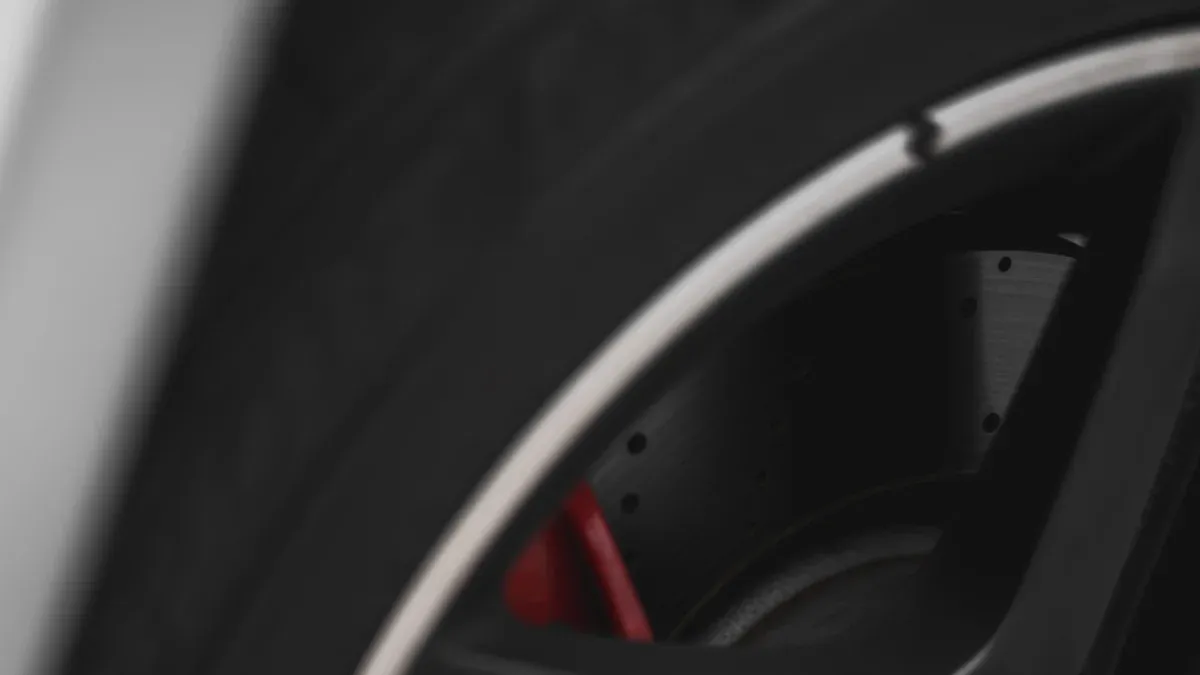
Proper maintenance of graphite bearings and bushings plays a critical role in preventing operational downtime. Carbon graphite bearings, known for their superior sealing capabilities, ensure efficiency by reducing leaks in industrial systems. Proactive care extends the lifespan of these graphite bearing components and enhances performance. Ningbo VET Energy Technology Co specializes in delivering premium graphite solutions, including graphite bearing/bushing products, tailored to meet industry demands.
Key Takeaways
- Pick the correct carbon type for your graphite parts. This affects how long they last and work in certain uses.
- Use good filters to remove rough particles. This helps graphite bearings and bushings last much longer.
- Check and care for lubrication systems often. Regular checks stop dirt and keep graphite parts working well.
Selecting the Right Materials for Graphite Bearing/Bushing

Choosing the Correct Carbon Grade for Durability
Selecting the right carbon grade is essential for ensuring the durability of graphite bearing/bushing components. Different grades offer varying levels of density, strength, and temperature resistance, making them suitable for specific applications. For instance, Grade 181C provides excellent flexural and compressive strength, making it ideal for high-load environments. On the other hand, Grade 35 excels in high-temperature applications, withstanding up to 5,000°F in neutral conditions.
The table below compares the performance characteristics of popular graphite grades:
| Grade | Density (lbs./ft.3) | Flexural Strength (psi) | Compressive Strength (psi) | Coefficient of Thermal Expansion (u/°F) | Temperature Limit Neutral (°F) | Temperature Limit Oxidizing (°F) | Scleroscope Hardness | Applications |
|---|---|---|---|---|---|---|---|---|
| 181C | 111.07 | 10,000 | 30,000 | 3.06 | 500 | 500 | 90 | Bearings / Brushings |
| 75 | 106.08 | 8,100 | 21,500 | 2.80 | 3,000 | 750 | 80 | Bearings / Brushings |
| 35 | 109.20 | 7,000 | 17,500 | 2.40 | 5,000 | 850 | 60 | Bearings / Brushings |

OEM tests have demonstrated that premium carbon grades significantly reduce wear and extend operational life, especially in turbine applications.
Importance of Matching Shaft Material with Graphite Components
Matching shaft material with graphite components enhances performance and minimizes wear. Shaft materials with a hardness of Rc 35 or higher and a surface finish of 16 µ∙in or better are recommended for optimal results. For high-speed applications, a finer finish of 12 µ∙in or better is preferred.
Proper alignment of the shaft’s spine ensures consistent load distribution and reduces torsional stiffness. This alignment stabilizes the graphite bearing/bushing, improving accuracy and operational efficiency. Studies show that spine orientation can increase performance by up to 60%, highlighting its importance in industrial applications.
How Ningbo VET Energy Technology Co Ensures Material Quality
Ningbo VET Energy Technology Co prioritizes material quality to deliver reliable graphite bearing/bushing solutions. The company employs rigorous testing protocols to ensure each component meets industry standards for density, strength, and temperature resistance. Their advanced manufacturing techniques produce graphite components with consistent properties, tailored to specific operational needs.
By leveraging premium-grade carbon graphite, Ningbo VET Energy Technology Co helps clients achieve longer component lifespans and reduced maintenance costs. Their commitment to quality makes them a trusted partner for industries requiring durable and efficient graphite solutions.
Preventing Abrasive Damage in Graphite Bearing/Bushing

Identifying and Eliminating Common Sources of Abrasives
Abrasive particles are a primary cause of wear in graphite bearing/bushing systems. These contaminants often originate from external debris, system-generated particles, or improper filtration. Removing clearance-sized particles is critical for extending the lifespan of journal bearings. Studies recommend using filter elements rated at 7 microns to eliminate harmful abrasives effectively.
The table below highlights the impact of filtration size on bearing life improvement:
| Filtration Size | Bearing Life Improvement | Notes |
|---|---|---|
| 3 μm | Statistically insignificant improvement | Compared to 49 μm filter |
| 30 μm | Statistically insignificant improvement | Compared to 49 μm filter |
| 49 μm | Statistically significant improvement | Demonstrated clear benefits of finer filtration |
By implementing proper filtration systems, industries can significantly reduce abrasive damage and improve the operational efficiency of graphite components.
Maintaining a Clean Operating Environment
A clean operating environment minimizes the risk of abrasive contamination. Dust, dirt, and other particles can infiltrate systems and accelerate wear. Regular cleaning schedules, sealed enclosures, and proper ventilation systems help maintain cleanliness. Operators should also inspect equipment frequently to identify potential contamination sources. Preventive measures like these ensure that graphite bearing/bushing components operate under optimal conditions.
Protective Measures to Reduce Abrasive Wear
Protective coatings and advanced materials can shield graphite components from abrasive damage. Research on nanoporous silica films demonstrates their effectiveness in preventing surface roughening. Coatings with a SiO2/K2O ratio of 4 provide superior protection against scratches, as shown by quantitative image analysis. These coatings reduce surface degradation, ensuring longer component life.
Additionally, industries can use wear-resistant materials and design modifications to enhance durability. Combining these measures with regular maintenance ensures that graphite bearing/bushing systems remain reliable and efficient.
Optimizing Lubrication for Graphite Bearing/Bushing
Benefits of Using Graphite Grease for Lubrication
Graphite grease offers unique advantages for lubricating graphite bearing/bushing systems. Its self-lubricating properties reduce friction, even under extreme conditions, ensuring smooth operation. Unlike traditional lubricants, graphite grease performs well in high-temperature environments, where other greases may degrade. This makes it an excellent choice for applications requiring consistent performance over extended periods.
Additionally, graphite grease forms a protective layer on surfaces, minimizing wear and extending the lifespan of components. Industries that rely on heavy-duty machinery often prefer this lubricant due to its ability to handle high loads without compromising efficiency. By incorporating graphite grease, operators can enhance the reliability of their systems while reducing maintenance costs.
Selecting the Right Lubricant for Specific Applications
Choosing the correct lubricant depends on several operational factors:
- Humidity Levels: Increased humidity promotes the formation of a tribolayer, which enhances lubrication. This is particularly beneficial in high-load environments.
- Structural Changes: Graphite transitions to turbostratic carbon under extreme conditions, improving its lubricating properties. Understanding this transformation helps in selecting lubricants for demanding applications.
- Operational Conditions:
- Load and Speed: Heavy-duty machinery benefits from thicker greases, while high-speed equipment requires lighter oils.
- Environmental Factors: Moisture, dust, and chemicals influence lubricant selection. Water-resistant lubricants are ideal for outdoor or marine settings.
- Additives: Anti-wear agents and antioxidants enhance performance, making them essential for specific applications.
Selecting the right lubricant ensures optimal performance and reduces the risk of premature component failure.
Regular Inspection and Maintenance of Lubrication Systems
Routine inspections are critical for maintaining lubrication systems. Studies show that adhering to ISO standards for inspection and testing significantly reduces the risk of equipment failure. Maintenance technicians can identify contamination in hydraulic systems during these inspections, preventing costly damage.
Lubrication management systems prioritize regular checks as part of condition monitoring. Real-time feedback during inspections allows engineers to address issues immediately, ensuring uninterrupted operation. By implementing consistent inspection schedules, industries can maximize the efficiency and lifespan of their graphite bearing/bushing systems.
Managing Operational Parameters for Graphite Bearing/Bushing
Understanding the PV Value and Its Role in Performance
The PV value, which represents the product of pressure (P) and velocity (V), is a critical factor in determining the performance of graphite bearing/bushing systems. A higher PV value indicates increased frictional heat, which can lead to material degradation if not managed properly. Operators must ensure that the PV value remains within the recommended range for their specific application. This prevents overheating and reduces the risk of premature wear.
Industries often rely on advanced monitoring systems to track PV values in real time. These systems provide valuable insights into operational conditions, enabling timely adjustments to maintain optimal performance. By understanding and managing the PV value, industries can enhance the reliability and lifespan of their graphite components.
Monitoring Temperature and Pressure to Prevent Failures
Temperature and pressure are two key parameters that significantly impact the performance of graphite bearing/bushing systems. Prolonged exposure to high temperatures, particularly above 430 °C, can cause graphitization in carbon steels. This process weakens the structural integrity of components, especially when graphite nodules align with tensile stress. Monitoring these parameters helps prevent such failures.
Unplanned downtimes due to temperature and pressure-related issues cost industries billions annually. Advanced condition monitoring systems, such as those enabled by the Industrial Internet of Things (IIoT), continuously collect data on these metrics. Real-time anomaly detection allows operators to address potential issues before they escalate, reducing downtime and improving productivity.
Adjusting Operational Parameters to Maximize Component Lifespan
Adjusting operational parameters, such as load, speed, and environmental conditions, can significantly extend the lifespan of graphite components. For example, reducing excessive loads or optimizing rotational speeds minimizes stress on the bearing surfaces. Additionally, maintaining a stable operating environment reduces the risk of contamination and wear.
Regularly reviewing and fine-tuning these parameters ensures that graphite bearing/bushing systems operate efficiently. Industries that prioritize these adjustments benefit from reduced maintenance costs and improved system reliability.
Maintaining graphite seals and bushings involves four essential practices: selecting durable materials, preventing abrasive damage, optimizing lubrication, and managing operational parameters. Each step contributes to improved efficiency and extended component lifespan.
Proper maintenance reduces downtime and operational costs while enhancing system reliability.
| Maintenance Practice | Efficiency and Lifespan Insights |
|---|---|
| Regular Inspections | Identifies issues early, preventing failures and extending lifespan. |
| Cleanup Cycles | Removes contaminants, ensuring optimal performance. |
| Repair/Replace Broken Elements | Prevents temperature issues, enhancing durability. |
Ningbo VET Energy Technology Co provides premium graphite components with enhanced heat resistance, corrosion resistance, and durability. Their rigorous quality control ensures consistent performance, reduced wear, and low-maintenance solutions. Industries can trust their expertise to achieve long-term operational success.
FAQ
What are the signs of wear in graphite seals and bushings?
Look for increased vibration, unusual noises, or reduced efficiency. These signs often indicate wear or damage in graphite components and require immediate inspection.
How often should graphite components be inspected?
Inspect graphite seals and bushings every three to six months. Regular checks help identify issues early, ensuring optimal performance and preventing unexpected failures.
Can graphite components operate without lubrication?
Yes, graphite components can self-lubricate under certain conditions. However, adding lubrication enhances performance, reduces wear, and extends the lifespan of the components.
💡 Tip: Always consult the manufacturer’s guidelines for maintenance schedules and lubrication requirements to maximize efficiency.






